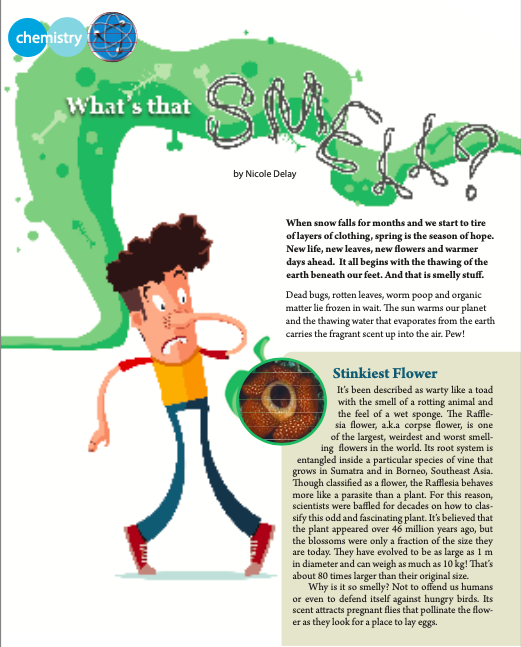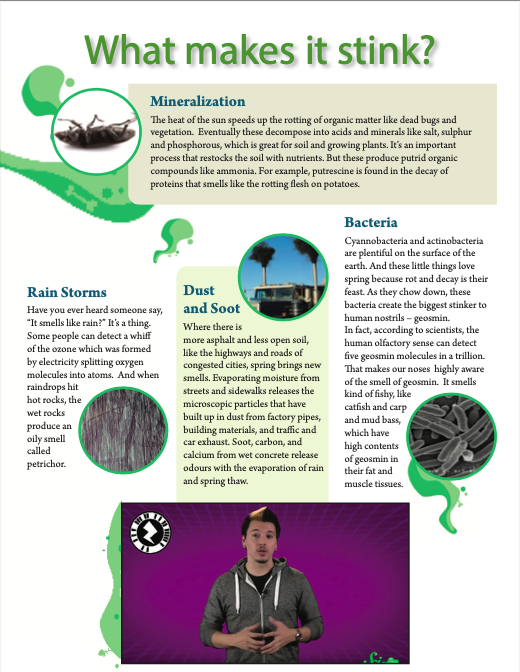
When snow falls for months and we start to tire of layers of clothing, spring is the season of hope. New life, new leaves, new flowers and warmer days ahead. It all begins with the thawing of the earth beneath our feet. And that is smelly stuff.
Dead bugs, rotten leaves, worm poop and organic matter lie frozen in wait. The sun warms our planet and the thawing water that evaporates from the earth carries the fragrant scent up into the air. Pew!
Stinkiest Flower
It’s been described as warty like a toad with the smell of a rotting animal and the feel of a wet sponge. The Rafflesia flower, a.k.a corpse flower, is one of the largest, weirdest and worst smell- ing flowers in the world. Its root system is entangled inside a particular species of vine that grows in Sumatra and in Borneo, Southeast Asia. Though classified as a flower, the Rafflesia behaves more like a parasite than a plant. For this reason, scientists were baffled for decades on how to classify this odd and fascinating plant. It’s believed that the plant appeared over 46 million years ago, but the blossoms were only a fraction of the size they are today. They have evolved to be as large as 1 m in diameter and can weigh as much as 10 kg! That’s about 80 times larger than their original size.
Why is it so smelly? Not to offend us humans or even to defend itself against hungry birds. Its scent attracts pregnant flies that pollinate the flower as they look for a place to lay eggs.


Mineralization
The heat of the sun speeds up the rotting of organic matter like dead bugs and vegetation. Eventually these decompose into acids and minerals like salt, sulphur and phosphorous, which is great for soil and growing plants. It’s an important process that restocks the soil with nutrients. But these produce putrid organic compounds like ammonia. For example, putrescine is found in the decay of proteins that smells like the rotting flesh on potatoes.
Rain Storms
Have you ever heard someone say, “It smells like rain?” It’s a thing. Some people can detect a whiff
of the ozone which was formed by electricity splitting oxygen molecules into atoms. And when raindrops hit hot rocks, the wet rocks produce an oily smell called petrichor.
Dust and Soot
Where there is
more asphalt and less open soil, like the highways and roads of congested cities, spring brings new smells. Evaporating moisture from streets and sidewalks releases the microscopic particles that have built up in dust from factory pipes, building materials, and traffic and car exhaust. Soot, carbon, and calcium from wet concrete release odours with the evaporation of rain and spring thaw.
Bacteria
Cyannobacteria and actinobacteria are plentiful on the surface of the earth. And these little things love spring because rot and decay is their feast. As they chow down, these bacteria create the biggest stinker to human nostrils – geosmin.
In fact, according to scientists, the human olfactory sense can detect five geosmin molecules in a trillion. That makes our noses highly aware of the smell of geosmin. It smells kind of fishy, like catfish and carp and mud bass, which have high contents of geosmin in their fat and muscle tissues.
